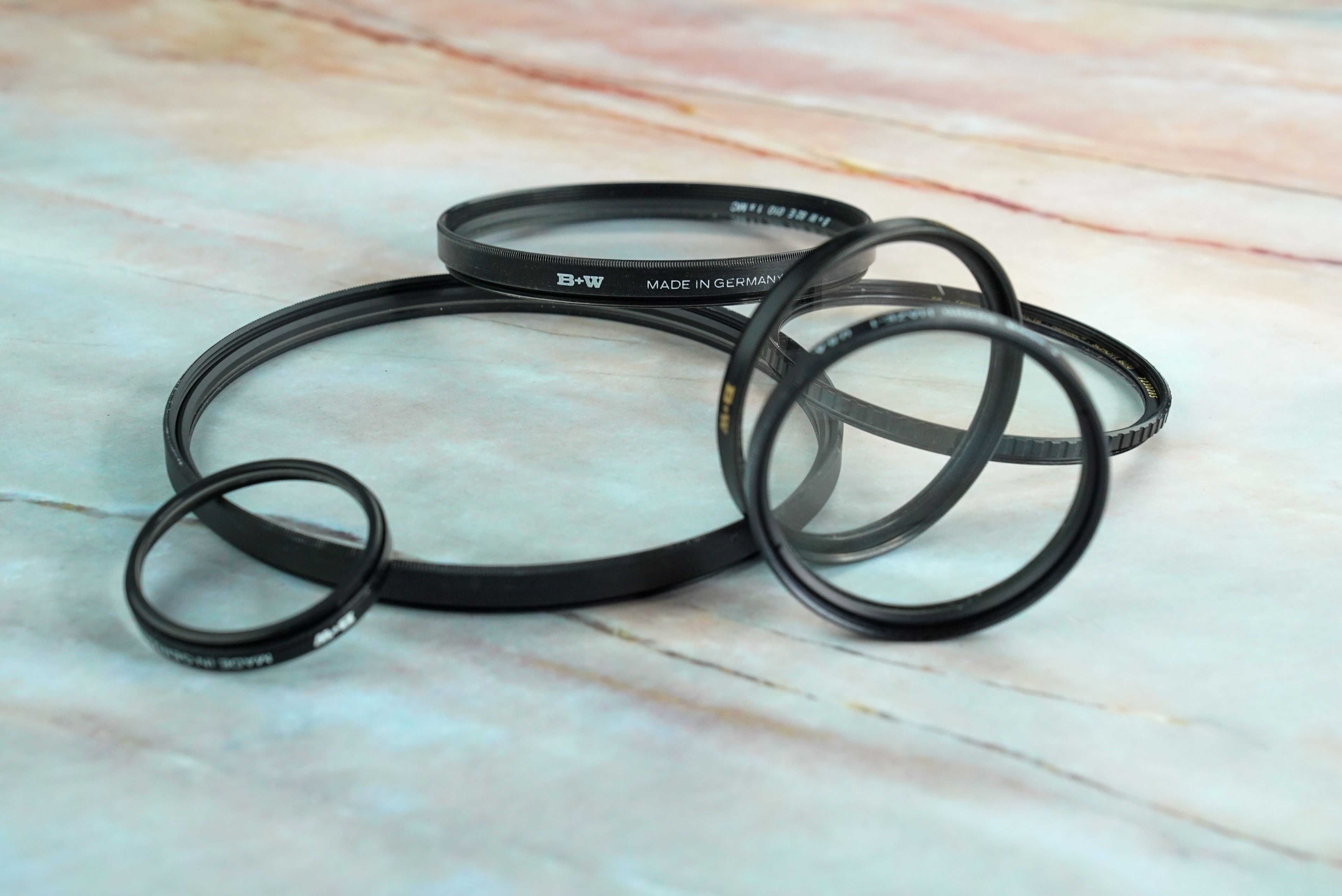
Lens filters can be intimidating to beginner photographers. I’m talking about the kind you put in front of your lens, not the kind you apply in post-production on social media apps. What’s the difference between a ‘UV’ filter and a ‘Polarizing’ filter anyway? Why are some rectangular and some round? Why does this one cost $5 and this one cost over $100!? There are dozens of different types out there and it can be difficult to know which brands are trustworthy. We’re starting this short series of blogs to de-mystify some of the more basic filters and make a couple of purchasing suggestions.
Does everyone need a lens filter for every shot?
Nah, not really.
Do we recommend you get one or two for your camera bag?
Yep. Filters are a relatively simple and inexpensive way to increase your functionality, protect your lenses, and ensure that you’re able to get the shot in-camera. Not everybody wants to spend hours in the darkroom or editing bay.
Protective Filters
Let’s start with what is possibly the most common and most controversial filter of all—the protective filter type. Filters of this type go by many names. Glass filters, Clear filters and commonly UV, Haze or Skylight filters are used for the same purpose. That is— they work as an extra line of defense against the elements, ideally without affecting your image quality. High-end companies like B+W will add special coatings to these protective filters so that they repel dust, oil or moisture so it can be easier to remove from the front of your glass.

While to some, using a relatively inexpensive glass piece to absorb any potential damage seems like a no-brainer, others strongly disagree. I promised controversy, didn’t I? Some other photographers say that they get enough lens protection from using a lens hood, or simply being careful. These shooters have a valid reason for avoiding inexpensive clear filters for protection. Why would you take a calibrated and coated lens that’s been fine-tuned for sharpness and clarity just to put a less-expensive piece of glass on the front that is likely to be of a much lower quality than the lens itself?
This is a very good point. Even at KEH, members of our staff have differing opinions on this topic. Some barely touch a lens before putting a protective filter on the front. The happy medium, of course, is to purchase a protective filter created by a brand that’s known for clarity and quality like B+W, HOYA, Heliopan, Tiffen, Singh-Ray or similar. These brands aren’t typically sold at the giant electronics or department stores, but we’ve got them if you’re looking for them.
Why UV Filters Aren’t Just For Lens Protection
Many people assume that the popular UV filter is simply there to protect the front element of the lens in case it’s dropped or bumped. While UV filters can indeed be used for this purpose, they also cut ultraviolet light. This was more necessary when film photography was more common since film is more sensitive to UV light than today’s digital sensors. With older film types, there’s a possibility that shooting without a UV filter could lead to a blueish haze on your film, especially on sunny days or at high altitudes. With modern camera sensors, this isn’t a problem.
A UV Haze or Skylight filter does have an effect on your image, though. They can sometimes intensify lens flares which can mess with your color and contrast. Skylight filters, often linked in with UV filters, add a slightly warm cast to your images to counteract the typically blue-looking ultraviolet light. Therefore if you are looking for simply a protective filter with a minimal impact on your image quality, steer clear of Skylight filters. On the other hand, a touch of warmth in your image may be exactly what you’re looking for. Check out UV, Haze and Skylight filters here.
 Round vs Rectangular
Round vs Rectangular
Most consumer lens filters come in the same form—one or two pieces of glass surrounded by a thin metal ring with screw threads to match the front cap size of your lens. Most consumer lenses sold today also have corresponding screw threads to make this type of filter connection easy and secure. This type of screw-on filter can be very small, like 22.5mm for the rear element of some telephoto lenses. It can also be very large, like 112mm for—well, the front element of the very same big telephoto lenses. Naturally, the larger the lens, the higher the price climbs. Good glass doesn’t usually come cheap, after all.
Rectangular or square filters must be held on the front of your lens by an adapter—or a matte box if you’re shooting a motion picture. This might sound like a pain, but there are positives to this type of setup also. A photographer doesn’t need to get a different size filter for each lens since a single set of rectangular filters can fit many lenses. If shooting with a gradient filter (which we’ll talk about next time), the square type could be easier to position than a screw-on one. Often times, these filters are much larger than the front of the lens and have a much smaller likelihood of causing vignette or ‘tunnel vision’ from extending the barrel of your lens with another metal ring.
That doesn’t mean they’re the final answer when it comes to filter type. Circular filters are typically more durable, able to withstand more abuse before breaking whereas a flat piece of glass with corners can very easily chip or break if dropped. With circular filters, you can also simply leave it on the front of your lens if you anticipate shooting with the filter on. This one comes down to your personal preference and shooting style.
 Not All Filters Are Created Equal
Not All Filters Are Created Equal
It may seem easy enough to just buy a filter from one of the big box shops since it’s right there in the photo department and it’s only $19.99.
DON’T.
As I mentioned earlier, the brand matters when it comes to putting extra pieces in between your lens and your subject. KEH doesn’t carry any filter-making brands that aren’t known for quality products. Some of our most popular filter brands include HOYA, Tiffen, B+W and Heliopan. In fact, we even carry brand new filters from Breakthrough Photography and HOYA in addition to our used selection.
Every one of our used filters is closely checked for scuffs and scratches. While we know that a minor scratch on a filter won’t noticeably affect image quality, we also know that nobody wants to buy one with a scratch on it. Because of this, we are incredibly stringent when it comes to filter grading.
Don’t be nervous about buying a gently-used lens filter, though. Typically the used filters that we grade are either ‘pass’ or ‘fail’ and default to ‘excellent’ or ‘don’t sell.’ If you’re buying one of our filters, you can rest easy that it’s just as functional as a new one— it’s just been thoroughly-tested for you.
In the next chapter of ‘Lens Filters Explained’ we talk a bit about ND filters, when you may want to use them and why you might want a set instead of a single Variable one. We’ll also explore polarizers and graduated filters.
Read Lens Filters Explained: ND Filters And Polarizers
Got any filters you want to know more about? Do you stick to a specific brand, or are you a filter-free shooter? Let us know in the comments below.
Filters featured in imagery:
Breakthrough Photography 72mm UV Filter
Kenko 112mm Protector MC Filter
Formatt Hitech 67mm Firecrest Ken Kaminesky Signature Filter Kit




